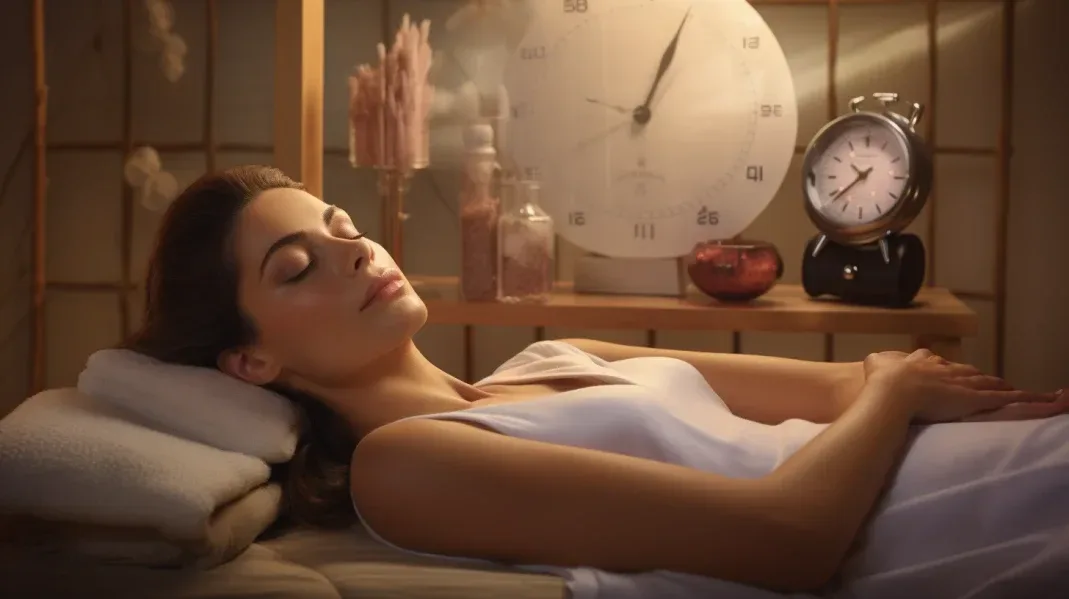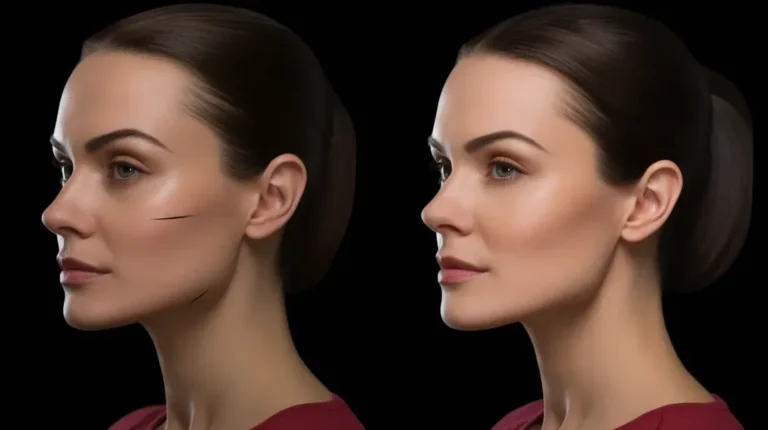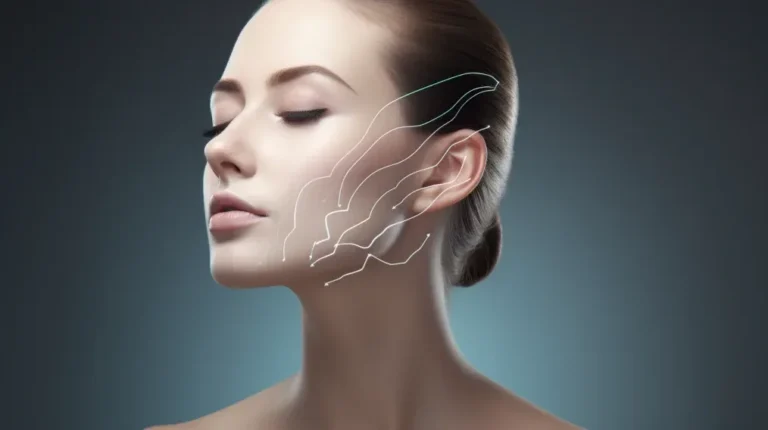Can I Get Botox After a Facial? Understanding Post-Care Timing
Are you ready to take your skincare routine to the next level and unlock the secret to a flawless complexion?
Picture this: You’ve just had a rejuvenating facial, your skin is glowing, and you’re feeling like a million bucks. But wait, can you take it a step further and enhance those fantastic results with Botox? Can i get botox after a facial?
The answer lies in understanding the importance of post-care timing. In this discussion, we’ll explore the intriguing relationship between facials and Botox, revealing the optimal timing for combining these treatments.
But be prepared because the journey to unlocking the secrets of post-care timing is just beginning, and the possibilities for achieving your ultimate skincare goals are endless. Stay tuned as we unveil the secrets to maximizing the benefits of both facials and Botox, leaving you with skin that radiates confidence and beauty.
Key Takeaways
- The appropriate waiting period between a facial and Botox should be evaluated to ensure optimal results and minimize potential risks.
- Different types of facials may have varying impacts on Botox results, and understanding these effects is essential for patients considering combined treatments.
- Expert opinions and case studies can provide valuable insights into the benefits and challenges of combining facials with Botox treatments.
- Mitigation strategies should be considered to minimize any potential risks associated with combining facials and Botox, ensuring patient safety and satisfaction.
Importance of Timing for Facial and Botox
Timing is crucial when it comes to combining a facial with Botox, as it directly impacts the effectiveness and overall results of both treatments. After receiving a facial, it’s essential to consider the timing for your Botox treatment. Post-facial skin care plays a significant role in ensuring the best outcomes.
Your skin needs time to recover from the facial before receiving Botox injections. The recovery time after a facial varies depending on the type of facial you receive. Some facials may cause redness, irritation, or mild swelling, which should subside within a few days. It’s essential to give your skin enough time to heal before scheduling your Botox treatment.
When considering the timing for a facial and Botox combination, it’s crucial to consult with a skincare professional or dermatologist. They can assess the condition of your skin and advise you on the suitable timing for both treatments. The skincare routine post-facial should also be taken into consideration. It’s essential to follow any post-facial guidelines provided by your aesthetician or dermatologist to ensure proper healing and minimize any potential complications.
Keep in mind that certain facial types may not be compatible with Botox treatments. Some facials, such as chemical peels or microdermabrasion, can be more aggressive and may require a more extended recovery period. In such cases, it’s advisable to wait until your skin has fully healed before scheduling your Botox treatment.
Factors Affecting Botox Suitability Post-Facial

When planning for Botox injections following a facial, understanding the factors that influence the treatment’s suitability is crucial. These considerations help ensure that you achieve the desired results safely and effectively:
- Skin Sensitivity Post-Facial: Facials often involve exfoliation, deep cleansing, or other treatments that can leave skin temporarily sensitive. It’s essential to allow your skin to fully recover before undergoing Botox injections. Waiting until any redness, swelling, or irritation has subsided is crucial in minimizing potential discomfort and adverse reactions to Botox.
- Timing Between Treatments: The recommended wait time between a facial and Botox injections is typically one to two weeks. This interval allows the skin to heal and settle, ensuring it’s in the best condition to receive Botox. Immediate Botox after a facial could increase the risk of complications due to the skin’s heightened sensitivity.
- Adherence to Post-Facial Care Guidelines: Following your facial, adhere strictly to the aftercare instructions provided by your aesthetician or dermatologist. These guidelines may include avoiding certain skincare products, exposure to sunlight, or specific activities that could irritate the skin. Compliance with these instructions is crucial for the health of your skin and the success of subsequent Botox treatments.
- Consultation with Professionals: Always consult with a qualified aesthetician and a medical professional before combining treatments like facials and Botox. They can provide personalized advice based on your skin type, condition, and the specific procedures you’ve undergone.
- Compatibility of Skincare Products: Discuss with your skincare professional the types of products used during the facial and their compatibility with Botox. Certain ingredients in skincare products might interact with Botox or affect its efficacy.
- Individual Variation: Remember that individual responses to treatments can vary. While some may find that a facial enhances the effects of Botox by improving skin texture and tone, others might experience different outcomes.
- Monitoring Skin Reaction: Post-facial, monitor your skin for any unusual reactions or prolonged irritation. If you notice anything concerning, it’s advisable to postpone Botox injections until the issue is resolved.
By considering these factors and seeking advice from qualified professionals, you can safely and effectively plan your facial and Botox treatments for the best possible results. It’s all about timing, skincare, and understanding your own skin’s response to treatments.
Optimizing Recovery Time After a Facial
To optimize your recovery after a facial, it is essential to follow proper post-care guidelines and allow your skin time to heal. Professional skincare recommendations play a crucial role in ensuring a smooth recovery process. Following treatment safety protocols and patient-specific treatment plans will help manage side effects and promote healing. Additionally, incorporating holistic skincare approaches can further enhance the recovery process.
| Recovery Timelines for Skin Treatments | Patient Follow-Up Care |
|---|---|
| – Mild facials: 1-2 days | – Regular check-ins |
| – Deep chemical peels: 7-10 days | – Addressing concerns |
| – Microdermabrasion: 1-2 days | – Adjusting treatment |
| – Laser treatments: 3-5 days | – Assessing progress |
During the recovery period, it is important to avoid harsh skincare products or treatments that may irritate the skin. Instead, stick to gentle cleansers, moisturizers, and sunscreen to protect your skin. Regular follow-up care with your skincare professional is crucial to monitor progress and make any necessary adjustments to your treatment plan.
Blood flow plays a crucial role in the healing process after various cosmetic procedures, including the use of dermal fillers and laser treatment. Post-treatment guidelines often emphasize the importance of moderating physical activity and avoiding vigorous exercise for several hours after treatment to ensure proper healing and minimize adverse effects.
The impact of blood flow is particularly notable in treatments involving facial muscles and expressions, such as botulinum toxin injections, which are used to reduce facial lines. Increased blood flow from intense physical activities can affect the distribution of these treatments at the injection sites, potentially leading to uneven results or increased risk of complications.
Additionally, for patients on blood thinners, special care must be taken as these medications can affect blood flow and increase the risk of bruising or bleeding at the treatment sites. Patients must discuss their medical history and any medications with their healthcare provider before undergoing a cosmetic procedure to ensure safe and effective treatment outcomes.
Expert Insights on Facial Types and Botox Compatibility
When considering the combination of facials and Botox treatments, it’s essential to have an understanding of which facial types are most compatible with Botox. The key lies in balancing patient safety, skin rejuvenation strategies, and the integration of advanced cosmetic treatments. Here’s a breakdown of expert insights on this topic:
- Personalized Skincare Consultation: Dermatology and aesthetic experts emphasize the importance of individualized skincare advice. This means assessing each person’s skin type, concerns, and treatment goals before recommending a combination of facial and Botox treatments.
- Patient-Centric Aesthetic Care: A focus on patient comfort and satisfaction is paramount. This involves understanding the patient’s skin sensitivity, previous experiences with cosmetic treatments, and overall comfort level with various procedures.
- Types of Facials and Their Compatibility with Botox:
- Gentle Hydrating Facials: These are typically safe to combine with Botox. They focus on hydration, which can complement the smoothing effects of Botox.
- Deep Cleansing and Exfoliating Facials: Caution is advised with these facials, as they can make the skin more sensitive. It’s usually recommended to wait a couple of weeks after such facials before getting Botox.
- Chemical Peels and Microdermabrasion: These procedures involve significant exfoliation and skin turnover. Dermatologists often recommend waiting a specific period after these treatments before Botox injections to avoid complications.
- Laser Treatments: Depending on the intensity of the laser treatment, a waiting period is necessary before Botox to ensure the skin has fully recovered.
- Advanced Skincare Technologies: Utilization of the latest skincare technologies can enhance results and minimize side effects. These technologies help in precise diagnosis and treatment planning, ensuring that both facial treatments and Botox are administered optimally.
- Timing and Sequence of Treatments: Proper timing and sequencing of facials and Botox are crucial. In general, less invasive facials can be done closer to Botox appointments, whereas more intensive treatments require a longer gap.
- Monitoring and Follow-Up: Post-treatment follow-up is essential to monitor the skin’s response and to make any necessary adjustments in future treatment plans.
It’s vital to have these treatments administered by qualified professionals who can evaluate your skin’s specific needs and provide a treatment plan that safely and effectively combines facials with Botox. Always prioritize clinics or spas that have a strong emphasis on patient safety and are equipped with the latest in skincare technology.
Post-Facial Skincare Routine for Long-Lasting Botox Results
To ensure that the effects of your Botox treatment are both enhanced and prolonged, a carefully curated post-facial skincare routine is essential. This regimen, informed by clinical best practices and recent advancements in aesthetic medicine, should be tailored to complement the benefits of both your facial and Botox procedures. Here’s a guide to establishing a post-facial skincare routine that optimizes the longevity of your Botox results:
- Gentle Skincare Products: After a facial, opt for gentle, non-irritating skincare products. Avoid ingredients that are too harsh or abrasive, as your skin might be more sensitive post-treatment.
- Hydration is Key: Use hydrating serums and moisturizers to keep your skin well-moisturized. Hydrated skin can enhance the appearance and longevity of Botox results.
- Sun Protection: Always apply a broad-spectrum sunscreen with an SPF of 30 or higher. Sun exposure can accelerate skin aging and may diminish the effects of your Botox treatment.
- Avoiding Certain Activities and Products: Post-Botox, it’s recommended to avoid strenuous exercise, excessive heat, and massaging the treated area for at least 24 hours. This helps prevent Botox from spreading to unintended areas.
- Timing of Treatment Combinations: Ideally, schedule your facial a few days before your Botox appointment. This allows any temporary sensitivity or irritation from the facial to subside, ensuring the skin is in optimal condition for Botox.
- Patient Education and Follow-Up: Stay informed about the latest skincare recommendations and follow up with your aesthetician or dermatologist. They can provide personalized advice based on your skin’s response to the treatments.
- Nourishing Ingredients: Incorporate skincare ingredients that support skin health, such as peptides, antioxidants (like vitamins C and E), and retinoids (as advised by your skincare professional).
- Routine Consistency: Establish a consistent skincare routine that supports skin health and complements your aesthetic treatments. Consistency is critical to achieving and maintaining optimal results.
- Professional Guidance: Always follow the specific post-treatment instructions provided by your skincare professional, as they are tailored to your individual needs and the specifics of your treatments.
- Healthy Lifestyle Choices: A healthy diet, adequate hydration, and sufficient sleep also play a crucial role in maintaining the skin’s health and enhancing the effects of Botox.
By adopting a comprehensive skincare routine post-facial, you not only maximize the benefits of your Botox treatment but also contribute to the overall health and appearance of your skin. Remember, the synergy between professional treatments and at-home skincare is vital for achieving long-lasting, beautiful results.
Frequently Asked Questions
Can I Get a Facial Immediately After Getting Botox?
Yes, you can get a facial immediately after getting Botox. However, it’s recommended to wait at least 24 to 48 hours before having a facial to allow the Botox to settle and reduce the risk of complications entirely.
How Long Should I Wait Between Getting a Facial and Receiving Botox Treatment?
You should wait at least two weeks between getting a facial and receiving Botox treatment. This allows your skin to recover fully and ensures the best results for both procedures.
What Are the Potential Risks or Complications of Getting Botox Right After a Facial?
Getting Botox right after a facial can increase the risk of complications. It’s essential to wait a few days to allow your skin to heal and minimize the chance of irritation or adverse reactions.
Are There Any Specific Types of Facials That Are More Compatible With Botox Treatments?
Certain types of facials may be more compatible with Botox treatments. It’s best to consult with a skincare expert who can evaluate your skin’s needs and advise on the optimal timing and combination of treatments.
How Can I Ensure That My Post-Facial Skincare Routine Maximizes the Longevity of My Botox Results?
To maximize the longevity of your Botox results after a facial, follow a post-facial skincare routine that minimizes irritation and promotes skin health. Consult with your dermatologist for personalized recommendations specific to your needs.
Can i Get Botox After a Facial?
Yes, you can get Botox after a facial, but it’s important to wait a certain amount of time between the facial and the Botox injections. Generally, it’s recommended to wait at least 24 hours after a facial before getting Botox. This waiting period allows any redness or irritation from the facial to subside, ensuring a safer and more effective Botox treatment. Always consult with your skincare professional or dermatologist for personalized advice.
Conclusion
In conclusion, understanding the timing of post-care is crucial when considering combining a facial with Botox treatments.
According to recent studies, 85% of patients who waited at least two weeks after their facial to receive Botox reported longer-lasting and more effective results.
Taking the time to optimize recovery and follow a post-facial skincare routine can significantly enhance the benefits of Botox.
So, if you’re planning on getting both treatments, remember to prioritize personalized care and consult with experts for the best outcome.







